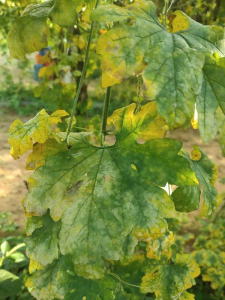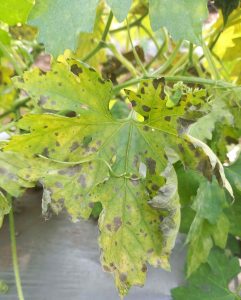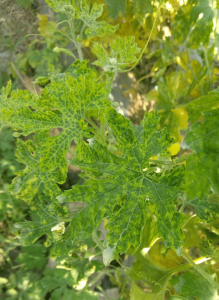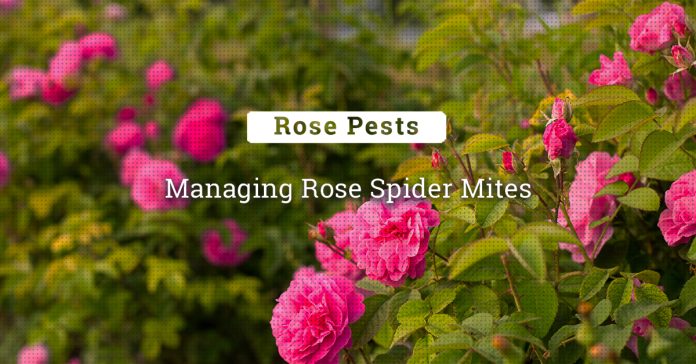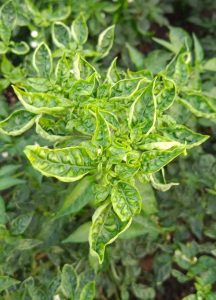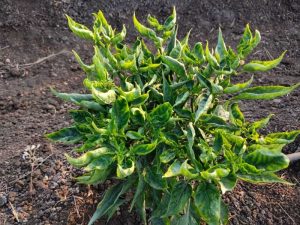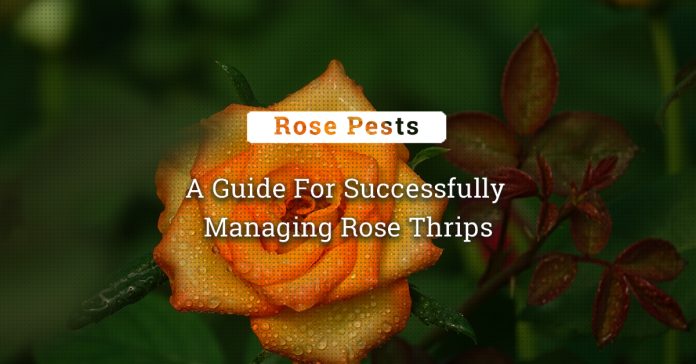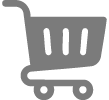Onion (Allium cepa) is an important root vegetable, serving as a staple ingredient in many Indian dishes. It is a member of the Allium family, which also includes garlic, leeks and chives. They are known for their pungent flavor and aroma, which are caused by sulfur-containing compounds. India is one of the largest producers of onions in the world, with the states of Maharashtra, Karnataka and Gujarat being major onion-growing regions. India produced about 32 million metric tons of onion in the year 2022. Total area under its cultivation in 2022 is 1.94 million hectares. The demand for onions in India is high, and the crop is an important source of income for many farmers in the country.
Soil Requirement
Almost all soil types are suitable for onion cultivation. However, sandy loam to clay soil with good drainage, moisture holding capacity and rich in organic matter is considered ideal. Optimum soil pH for its growth is 6 – 7.5. Onion is sensitive to highly acidic, saline and alkali soils. Avoid waterlogging in the field.
Season and Time of planting
| States |
Seasons |
Sowing time |
Transplanting time |
Harvesting time |
| Maharashtra, Parts of Gujarat |
Kharif |
May – June |
July – Mid Aug |
Oct – Dec |
| Early rabi or late kharif |
Aug – 1st week of Sept |
Sept – Oct |
Mid Jan – Feb end |
| Rabi |
Oct – mid Nov |
Dec – Jan 1st week |
Apr – May |
| Tamil Nadu, Karnataka and Andhra Pradesh |
Early kharif |
Mar – Apr |
Apr – May |
Jul – Aug |
| Kharif |
May – Jun |
Jul – Aug |
Oct – Nov |
| Rabi |
Sept – Oct |
Nov – Dec |
Mar – Apr |
| Rajasthan, Haryana, Punjab, UP |
Kharif |
May end – Jun |
Jul – Mid Aug |
Nov – Dec |
| Rabi |
Oct end – Nov |
Mid Dec – Mid Jan |
May – Jun |
| West Bengal, Orissa |
Kharif |
Jun – Jul |
Aug – Sept |
Nov – Dec |
| Late Kharif |
Aug – Sept |
Oct – Dec |
Feb – Mar |
| Hilly regions |
Rabi |
Sept – Oct |
Oct – Nov |
Jun – July |
| Summer (long day type) |
Nov – Dec |
Feb – Mar |
Aug – Oct |
Varieties of onion
| States |
Onion Varieties |
| Karnataka & Telangana |
Nasik Red onion (N-53), Royal selection onion, JSC Nasik Red onion (N-53), Prema 178 onion |
| Andhra Pradesh |
Nasik Red onion (N-53), JSC Nasik Red onion (N-53), Prema 178 onion, Gulmohar onion |
| Madhya Pradesh |
Nasik Red onion (N-53), Gulmohar onion, Laxmi onion seeds diamond super, Royal Selection onion, Rise Agro Maha Onion Bhima Super seeds |
| Maharashtra |
Nasik Red onion (N-53), Gulmohar onion, JSC Nasik Red onion (N-53), Royal selection onion, Laxmi onion seeds diamond super |
| Uttar Pradesh |
Nasik Red onion (N-53), Royal selection onion, JSC Nasik Red onion (N-53), Prema 178 onion, Gulmohar onion |
Different Methods of Growing Onions
Onions can be grown in three different methods depending upon the purpose of their cultivation.
- Seed sown in nursery and then transplanting the seedlings in mainfield
- Raising small bulblets for green onion production
- Broadcasting or Direct sowing
-
Nursery Management
Onion seeds are generally sown in nursery beds.
Preparation of nursery bed: For 1 acre main field, 0.05 acre i.e., 200 m2 of nursery area is required. Apply 200 kg of FYM mixed with 2 litre of Trichoderma harzianum at the time of last ploughing helps in controlling damping off, root rot, collar rot and other soil borne diseases. Prepare raised beds of 1 – 1.2 m width, 10 – 15 cm height and of convenient length. Maintain 70 cm distance between the beds.
Seed rate: 3 – 4 kg seeds are required for 1 acre field.
Seed treatment: Before sowing, treat the seeds with Bavistin at 2 gm/lit of water for 1 kg seeds or in bio fungicide by mixing 8 – 10 gm of Trichoderma viride in 50 ml of water for 1 kg seed to prevent damping off and other diseases.
Sowing: Sow the seeds in line at 5 – 7.5 cm apart at 1 cm depth. After sowing, cover the seeds with fine soil, powdered FYM or vermicompost. Give light irrigation. Drip or sprinkler systems of irrigation can be adopted. Cover the beds with paddy straw or sugarcane leaves or grass to improve germination by maintaining required moisture and temperature. Drench the soil bed with Carbendazim 50% WP at 0.5 – 0.75 gm/lit water to prevent damping off. Add 0.5 kg/bed of 15:15:15 (NPK) after 10 days of sowing, if seedlings show nutrient deficiency symptoms. Mulched grass or straw can be removed after germination is completed.
-
Raising small bulblets for green onion production
This method is used for production of green onions/bunching onion which have demand for salad in early winter. For this, take small onion bulblets of kharif onion varieties raised in previous season for planting. Prepare raised beds or flat beds depending upon soil type (Raised bed – heavy soil; Flat bed – sandy soil). 15 grams of seeds are sufficient for 1 m2 area of bed i.e., 3 kg seed is required for total nursery area. Sow them in mid Jan – Feb starting to get quality bulblets. Leave the plants in nursery bed up to April to May till their top fall. Harvest the tops and selected bulblets and store them by hanging method till July. These stored small bulbets can be used for transplanting in the kharif season for raising green onion.
-
Broadcasting/Direct sowing
Seed rate: 8 – 10 kg/acre; Time of sowing: Sept – Oct
In case of big onion, sow the seeds in lines at 30 cm apart (30 cm within row and 30 cm between plants). Later, thinning can be done to give proper spacing for bulb development. In case of small onion, broadcast the seeds in small flat beds. Do hand hoeing after sowing the seeds to allow seeds to reach 2.5 – 3 cm depth. Give light irrigation. At 10 days interval, weeding can be done.
Land preparation for main field
Plough the field to a fine tilth and add 10 t of FYM at the time of last ploughing. Flat beds or broad bed furrows can be formed for transplanting the seedlings. Prepare flat beds of 1.5 – 2 m width and 4 – 6 m length. For broad bed furrows, prepare beds of 120 cm width and 15 cm height with 45 cm furrow spacing between two beds. Irrigate the beds before transplanting seedlings.
Transplanting of seedling from nursery
Seedlings raised from seed sown nursery will be ready for transplanting within 6 – 7 weeks of sowing for kharif and 8 – 9 weeks for rabi. Transplant the seedlings with a spacing of 15 cm between the rows and 10 cm between the plants.
Fertilizer Requirement for Onion Crop
The general dose of fertilizer recommendation for onion is 60:24:24 kg/acre.
| Nutrient |
Fertilizer |
Dosage |
Time of application |
| Organic |
FYM |
10 t/acre |
At the time of last ploughing |
| N |
Urea |
65 kg |
Basal |
| 65 kg |
Top dressing (after 20 – 25 days after transplanting) |
| P |
Single Super Phosphate (SSP) |
150 kg |
Basal |
| K |
Muriate of Potash (MOP) |
40 kg |
Basal |
| Micronutrients |
Anshul Vegetable Special |
Spray: 2.5 gm/lit water |
20 – 25 days after germination.
(Give atleast 3 sprays with an interval of 20 days)
|
Water Management
Onion is mainly grown as an irrigated crop. Frequency of irrigation depends upon the climatic conditions and soil type. Irrigate the field at the time of transplanting the seedling. Give another irrigation on 3rd day after transplanting. Then, depending upon the soil moisture irrigate at an interval of 10 – 15 days. Stop irrigating the field 10 days before harvest. Avoid over watering or less watering as it may affect onion growth and development. Drip or sprinkler irrigation systems can also be adopted.
Weed Management
It is important to keep the field free from weeds during the initial growth stages. Apply Oxyfluorfens 23.5% E.C at 200 ml/acre followed by one hand weeding 45 days after transplanting for effective weed management.
Crop Rotation and Mixed cropping
Onion can be grown as an intercrop with sugarcane during the initial 5 months after planting sugarcane. They can be rotated with legumes, corn, brassica and solanaceous crops. Onions are heavy feeders and can quickly deplete the soil of nutrients. Rotating onions with legume crops can help to replenish the soil with nitrogen. Corn, on the other hand, is a non-host for onion pests and diseases, which can help to reduce the build-up of these problems in the soil. Similarly, rotating brassica and solanaceous crops with onions can help to maintain soil health and prevent the build-up of pests and diseases.
Plant Protection Practices
Pests of Onion crop
| Pests |
Symptoms |
Control Measures |
| Onion Thrips |
- Thrips infested leaves will be curled and twisted.
- Shows silvery patches on leaves.
- Distorted leaves and wilting and drying up of plants.
|
|
| Head borer |
- They feed on the flower stalk by cutting its pedicel.
- Makes entry holes in the onion bulb, which can be seen as small, round holes near the top of the bulb.
- Larvae leave behind small pellets of excrement (frass) near the entry holes.
|
|
| Onion fly |
- Flies may lay eggs on older leaves and soil.
- Maggots tunnel into the onion bulb and feed on the flesh, causing damage to the bulb.
- Maggots feed on the roots of onion plants, causing stunted growth.
- Infected plants become yellowish and later wilt.
|
|
| Cutworms |
- Young larvae feed on the tender foliage causing them to wilt, yellow, or brown.
- Later, as they grow up, they cut off young onion plants at the base of the stem leaving behind ragged edges or holes and causing them to wilt and die.
|
|
| Eriophyid mite |
- They feed on the young leaves between the layers.
- The leaves may turn yellow mottled at the edges.
- The leaves curl up and may not open up completely
|
|
| Red Spider mite |
- Nymph and adults feed on the undersurface of the leaves causing stippling or white dots on leaves.
- Presence of webbing on leaves.
- Affected leaves may show yellow or bronze spots in severe cases.
|
|
Diseases in Onion crop
| Diseases |
Symptoms |
Control Measures |
| Damping off |
- Wilting and collapse of the stems at or below the soil line.
- Stems of infected seedlings may turn brown or black
- Rotting of roots.
- Infected seedlings may appear dried out or desiccated.
|
|
| Basal rot |
- Soft, mushy rotting at the base of the onion plant, which can lead to the collapse of the plant.
- Leaves appear yellowish and later dry up.
- Presence of white mold growth on onion scales.
|
|
| Downy mildew |
- Development of greyish mold on the undersides of the leaves, causing them to curl.
- Leaves of infected plants may start to yellow and eventually turn brown and dry.
|
|
| Stemphyllum Blight |
- Affected leaves have small yellow to orange streaks in the middle of the leaves.
- Later, these water-soaked streaks enlarge and coalesce, forming irregular or spindle shaped spots with pinkish margin.
|
|
| Bacterial brown rot
(Serious disease during storage) |
- Brown, water-soaked streaks/spots appear on the neck of the bulbs.
- Infected tissues become soft and slimy, with a foul odor.
|
|
| Smut |
- Black, powdery spores appear on the leaf base and leaf surface.
- Presence of black lesions on base of the scales at the time of planting.
- Downward bending of affected leaves.
|
|
| White rot |
- Yellowing and dieback of leaf tips.
- Presence of white, cottony fungal growth on the decaying scales and base of the bulb.
- Small, spherical, black sclerotia are produced.
- Complete rotting of bulb.
|
|
| Purple blotch |
- Small, irregular purple spots on the leaves.
- Later, these spots enlarge and become blotches.
- The blotches may have a white center surrounded by a purple border.
|
|
| Anthracnose
(Twister Disease) |
- The leaves will also get curled and twisted with water-soaked pale-yellow patches on the leaf blades.
|
|
| Neck rot |
- The neck of infected onions becomes soft and watery, which can lead to the onion falling over.
- Infected necks can turn brown or black infected onions emit a foul smell,
- Necks of infected onions can become spongy to the touch.
|
- Ensure proper drying before storage.
- Avoid injury to bulbs during post-harvest handling.
- Spray Carbendazim 2 gm/lit of water before harvesting.
|
| Onion yellow dwarf
Vector: Aphids |
- Yellow streaks on base of true leaves.
- Leaves may turn yellow, starting from the tips and moving towards the base.
- Affected leaves become crinkled and flattened.
|
|
| Irish Yellow Spot Virus
Vector: Thrips |
- Presence of dry, straw coloured, tan, spindle shaped lesions with yellow or tan borders on leaves.
- These lesions may or may not have green centers.
|
- Practice crop rotation every 3 years.
- Removal of weeds.
- Spray Terra Virokill at 3 ml/lit of water.
- Control measures of thrips are given above can be followed.
|
(Note: Check the product’s label before application to know the right time of application.)
Harvesting
Time of harvesting depends on the purpose for which the crop was planted. For dry onions, harvesting can be done in 5 months while for green onions, harvesting can be done in 3 months after harvesting. For harvesting rabi onion, the indication is 50% of neck/top falling over. Harvesting is done by manually uprooting the bulbs. But for kharif seasons, since the top does not fall over, the sign of harvest is change in colour of leaves to slight yellow and red pigmentation on bulbs. During hot days when soil is hard, use hand hoe to pull out the bulbs. Spray the crop with Carbendazim 2 gm/lit of water which will help harvested onion protect from any kind fungal infections after harvest.
Curing
After harvesting, onions need to be cured to prolong the shelf life, for proper development of skin colour and remove field heat before storage. For curing, spread them out in the field without direct exposure to sun by covering the onion bulbs with foliage of other bulbs in small heap. Allow the onions to dry for 3 –5 days, until the leaves and stems are completely dry and brittle. After complete drying, cut the leaves leaving about 2 – 2.5 cm tops above the bulb.
Storage
Once the onions are cured, they can be stored in a cool, dry location. It is important to store them in a well-ventilated area to prevent mold and rot. Onions can be stored for several months if they are properly cured and stored.
Yield
8 – 10 t/acre.



